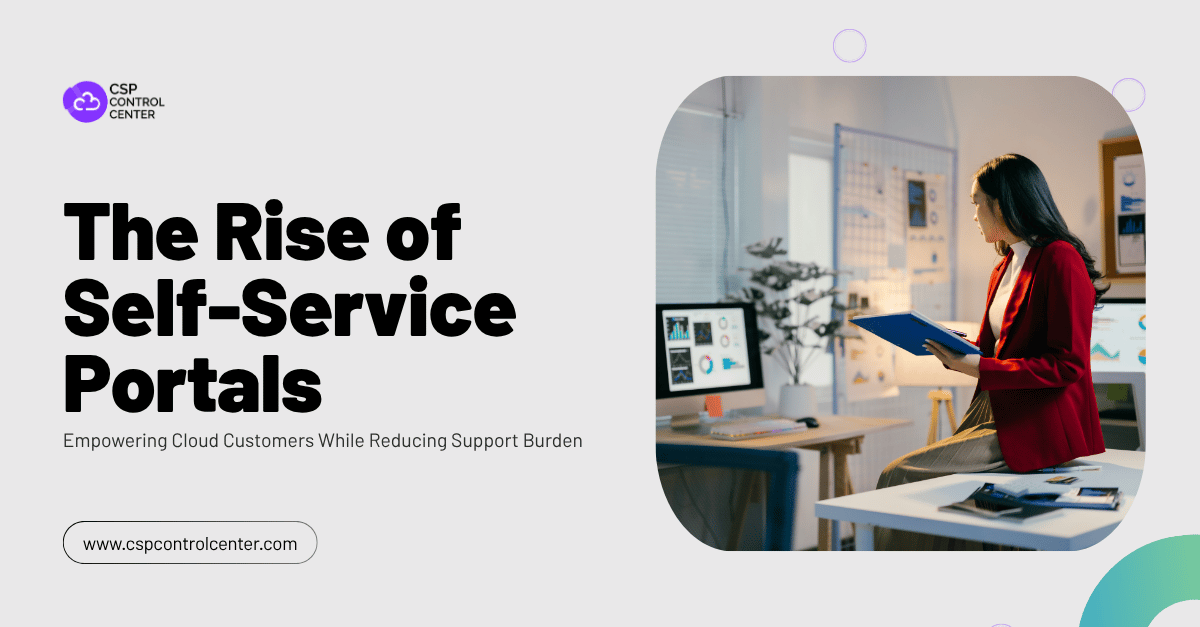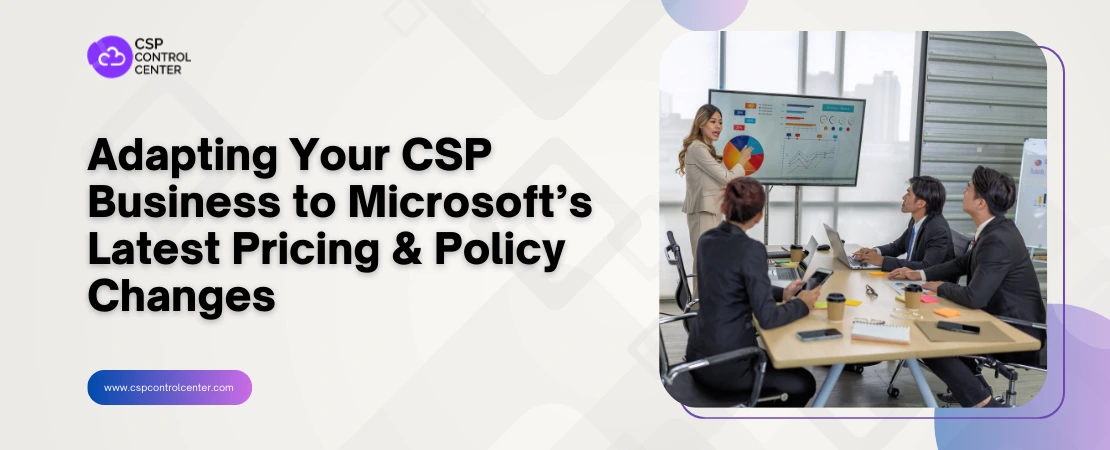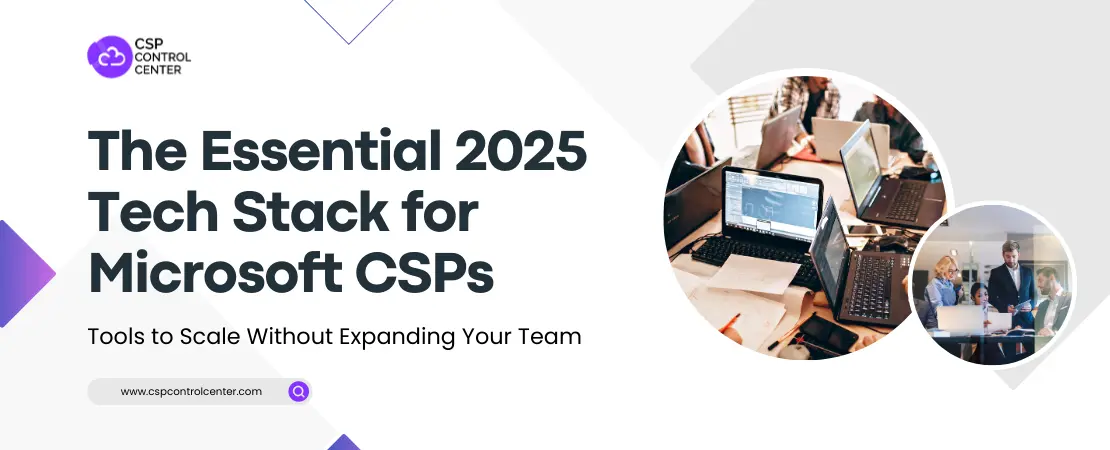Cloud services have come a long way and so has our reliance on them. Whether it’s for simple file storage or running complex workloads, businesses of all sizes are now turning to the cloud. In fact, Gartner expects end-user spending on cloud services to hit around $723.4 billion by 2025.
But with growth comes complexity. As more organizations jump on the cloud bandwagon, managing these environments isn’t as straightforward as it used to be, especially for Cloud Solution Providers (CSPs). There’s more to juggle, more to secure, and more expectations to meet.
Customers today want more than just uptime. They expect instant access to their resources, full transparency into what they are using, and the ability to control things on their own, all without having to raise a support ticket. As the customer base expands, traditional support methods are unable to handle the increased demand. This leads to customers getting frustrated and support teams getting overwhelmed.
To cater to this demand, CSPs need to offer their customers the option of self-service. Self-service portals are fast transforming how cloud services are delivered. Self-service is more than just convenient. Customers get control, transparency, and flexibility, and CSPs increase efficiency and reduce operational overhead.
Understanding Self-Service Portals in Cloud Services
Here’s what changed: Customer expectations have been shaped by the seamless, always-available experiences offered by platforms like Amazon, Netflix, and modern banking apps. As a result, they now look for the same level of instant access, intuitive design, and round-the-clock reliability—even when addressing critical issues at 2 AM.
The breaking point for most organizations comes during a crisis. Picture this: it is Friday evening, your customer is getting hammered by traffic, and they need to scale up immediately. In the old model, they would have to submit a ticket and cross their fingers that someone sees it before Monday. With a proper self-service portal, they can click a few buttons, and they are done.
But it goes deeper than emergency scenarios. Today’s cloud customers want to understand their spending in real-time, not wait for monthly reports. They want to see exactly which applications are consuming resources and when. They want to test configurations without having to justify every decision to a support agent.
Key Features of Modern Self-Service Portals
A modern self-service portal is more than just a dashboard. It’s a fully integrated experience that brings together several key capabilities:
Subscription Management
First, subscription management has to be bulletproof. Sounds basic, but you will be amazed how many portals make it hard to see what you’re actually paying for. Customers need to see their active services, understand their usage patterns, and spot any surprises before they show up on the bill. The best portals present this information in a way that tells a story, not just raw numbers, but context about why usage spiked or dropped.
Transparent Billing
Billing transparency is where a lot of providers get it wrong. They will show you the total amount due but hide the details. That leads to angry customers and disputed charges. The portals that work well put billing information front and center, with clear breakdowns and historical comparisons. Some even include cost projection features that help customers budget for upcoming months.
Provisioning
Real-time provisioning is another thing that is important. If customers cannot add a new user or increase storage limits instantly, your portal isn’t really self-service, it’s just a fancy ticket submission form.
Role-based Access Controls
Role-based access controls matter more than most people realize. In any decent-sized organization, you have got finance people who need billing access, technical staff who need configuration rights, and executives who want high-level dashboards. A good portal accommodates all these needs without creating security nightmares.
Together, these features create a user-centric interface that empowers customers while aligning with CSP operational goals.
Why Customers Love Good Self-Service
The transparency aspect is huge. Too many companies get stuck with massive cloud bills because they had no clue their usage was spiking. With a decent portal, customers catch these things early. Maybe their development team spun up some test servers and forgot to shut them down. In the old system, they would find out next month when accounting starts asking questions. Now they spot it early on and fix it before it costs real money.
This real-time visibility builds trust in a way that monthly reports never could. Customers can validate charges themselves, which practically eliminates billing disputes.
The speed factor is what really hooks customers, though. When customers need more capacity, they need it now. Not after a consultation call. Not pending approval from someone’s manager. Right now. A good portal makes infrastructure changes feel like editing a document – click, adjust, done.
There is something psychological about having control over their own environment. Nobody likes being dependent on other people for basic tasks, especially when those tasks are blocking important work. When customers can handle routine changes themselves, the whole relationship feels different. Less vendor-client, more like having their own private infrastructure team.
The interesting thing is how self-service customers end up being better customers overall. They learn the platform inside and out. They try new features. They optimize their setups because they can experiment without having to justify every test to a support agent.
The Provider Side: Why This Matters for Your Bottom Line
Support interactions cost real money, and when providers are handling thousands of tickets per month, those costs pile up quickly. Self-service portals eliminate most routine inquiries without hurting customer satisfaction. Satisfaction usually goes up because customers get faster resolutions.
But cost savings aren’t even the main benefit. The real value comes from what support teams can do when they’re not answering the same billing questions all day. They can tackle complex technical challenges, work on customer success initiatives, and actually help customers optimize their deployments for better performance.
Some providers have completely restructured their support organizations around self-service. Instead of reactive problem-solvers, their teams became proactive growth partners. That shift creates way more value than simple cost reduction ever could.
The data collection aspect is incredibly valuable, too. Every portal interaction reveals something about customer behavior patterns. Which features get used the most? Where do customers get confused? What problems come up repeatedly? Smart providers mine this information to improve their services, spot upselling opportunities, and fix issues before they generate support tickets.
Competitive differentiation matters more as cloud services become commoditized. Two providers with similar technical capabilities and pricing? The one with the superior self-service experience wins almost every time. Customers actively avoid clunky portals, and they will switch providers to escape frustrating interfaces.
Scalability drives the long-term strategy. Growing from a thousand customers to ten thousand customers by hiring proportionally more support staff doesn’t work economically. Self-service portals allow revenue growth without matching support cost increases. That’s fundamental to building a sustainable, profitable business model.
Implementation Strategies and Best Practices
Designing and launching a self-service portal is not a simple process. You require an understanding of customers’ needs along with a thoughtful design.
Start Small, Learn Fast
Here is where most companies fail: they try to do everything at once. Full-blown launches almost always fail because they are too complex, too risky, and too overwhelming for customers.
The smartest way to roll out a self-service portal? Start small. Pick a handful of customers, maybe 50 to 100, who you know are open to trying new things. Give them access to the basic features first, gather feedback, fix what’s obviously not working, and then slowly widen the rollout.
This kind of phased launch isn’t just about reducing risk. It also builds buy-in. When early users see their feedback being taken seriously, they feel like they are part of the process. And when it’s time to expand, they will often be the ones championing the portal to others. Plus, their input tends to be better because they know the system’s still evolving, they are not just complaining, they’re helping shape it.
It’s also worth pointing out that not all customers need the same thing. Power users want flexibility and advanced features. Casual users mostly want simplicity. Enterprise customers care a lot about security and compliance, while smaller businesses might just want to get things done quickly. Trying to build one portal that does it all perfectly from day one? That’s a fast track to mediocrity. You are better off getting it right for your most important segments first and then growing from there.
Provide Seamless Integration with Existing Infrastructure
Integration is where things get tricky. Your portal needs to talk to your billing system, your provisioning platform, your monitoring tools, and probably a dozen other systems. If any of these integrations are flaky, the whole experience falls apart.
Ensure Security and Compliance
Security becomes more complex when customers have direct access to system functions. You need robust authentication, detailed audit trails, and carefully designed permission structures. But you cannot make it so secure that it’s painful to use. Finding that balance takes real expertise.
The authentication piece is particularly tricky. Multi-factor authentication is pretty much mandatory these days, but customers hate anything that slows them down. Single sign-on integration helps, but it adds complexity on the backend. Some providers are experimenting with risk-based authentication that adapts security requirements based on user behavior and context.
Audit trails become critical when customers can make changes that affect their infrastructure. Regulatory compliance, internal controls, and troubleshooting all depend on comprehensive logging. But storing and managing all that log data creates its own challenges around performance and costs.
Educate Both Customers and Employees
Content strategy is where a lot of providers fumble. They will build a beautiful portal but populate it with outdated documentation and unhelpful error messages. Your knowledge base needs to be comprehensive, current, and written for actual humans. Video tutorials help, but they need to be short and focused on specific tasks.
Training is crucial but often overlooked. You need to teach customers how to use the new capabilities while preparing your internal team for the shift in support patterns. Change management is just as important as technical implementation.
The Future of Self-Service: AI, Personalization, and Beyond
AI is finally starting to change how self-service portals work. Most people think AI in portals means just chatbots that never understand what you are asking. The real breakthrough is happening with systems that figure out what customers need before they even know they need it.
From Self-Service to Smart-Service
Picture this: you log into your portal and there is a message waiting that says, “Your usage pattern suggests you will hit your bandwidth limit by Thursday. Want to upgrade your plan now or wait?” That is not some generic alert – it’s based on your actual usage trends and what typically happens with similar workloads.
These smart suggestions are game changers. A development team might be burning through compute credits because they forgot to shut down test environments over the weekend. Instead of discovering this disaster on Monday morning, the portal flags it Saturday evening with a simple fix suggestion. Problem solved before it becomes expensive.
Enhanced Personalization
Portal personalization, earlier used to mean picking a color scheme. Now it’s about creating completely different experiences for different users. A CFO logging in sees cost optimization opportunities and budget tracking. A developer sees performance metrics and deployment tools. Same data, totally different presentation.
This goes beyond just moving widgets around. Smart portals start recognizing workflow patterns and suggesting shortcuts. They notice when customers regularly perform certain sequences of actions and offer to automate those workflows.
Conversational Interfaces and Global Reach
The chat interfaces are improving, instead of keyword matching that leads to frustration, newer systems actually understand context.
The system understands follow-up questions, maintains context across the conversation, and can even handle requests that span multiple topics.
Global companies are pushing hard for multilingual support. Technical teams in different countries should not have to struggle with English-only interfaces when they are trying to solve urgent problems.
Generative AI in Documentation
AI is improving AI documentation greatly. Instead of digging through static FAQ pages, the newer portals generate answers tailored to the customer’s recent activity. If a customer asks, “How do I set up load balancing?” and the system doesn’t just show generic instructions. It provides steps specific to their current setup, with screenshots that match the actual interface, and suggestions that make sense for specific traffic patterns. It’s like having a technical writer who knows the environment intimately.
As cloud usage grows, customers demand speed, clarity, and more control. The CSPs who meet those expectations with powerful self-service experience can win more business, reduce support costs, and build stronger, stickier relationships. This isn’t about offloading support; it’s about upgrading the customer experience and unlocking a more scalable model. It’s about turning your portal into a growth engine, one that empowers users, surfaces insight, and keeps pace with how people actually work today.
Empower Your Cloud Customers with CSP Control Center
Take your self-service experience to the next level with CSP Control Center, the comprehensive platform designed for Cloud Solution Providers who want to give customers real-time control, deep transparency, and instant provisioning, all from a modern, intuitive portal. With features like detailed subscription management, role-based access controls, automated billing insights, and seamless integrations with your existing systems, CSP Control Center reduces your support burden while improving customer satisfaction and loyalty.
Start transforming your cloud business today with a self-service portal that’s built to scale. Book a demo today and discover how CSP Control Center can help you stay ahead of customer expectations.

 CSP Control Center
CSP Control Center
 CloudEvents
CloudEvents


